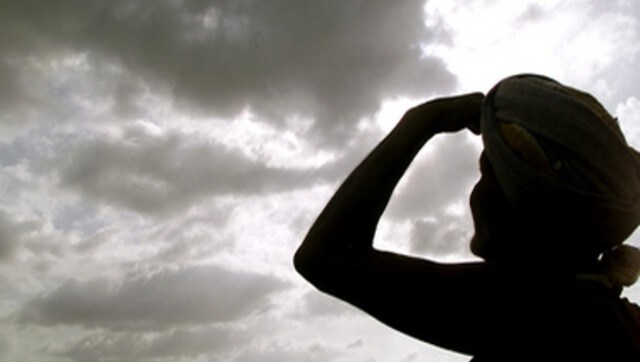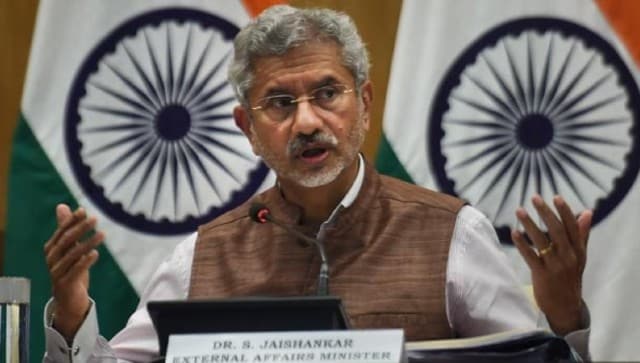Explained: North Korea's food shortage, how bad the situation is and why Kim Jong-un is fretting
According to reports, a kilo of bananas costs upwards of Rs 3,000 while a kg of corn is selling for more than Rs 204 in North Korea

File image of Kim Jong Un. AP
It is called the 'hermit kingdom' because of how secluded it is from the rest of the world thanks to the strict and authoritarian regime that runs the country. But cracks have emerged in the tough exterior that North Korea likes to show globally with its leader Kim Jong-un admitting recently that the food situation in the country is "getting tense".
Humanitarian organisations have issued urgent appeals for other countries to engage with nuclear-powered North Korea so that they can offer help, but Pyongyang has previously spurned any attempt to bail it out.
How bad is the situation?
While discussing any developments in North Korea it has to be remembered that it is one of the most secretive countries in the world and it is with great difficulty that any news trickles out to the world at large. Against this backdrop came the COVID-19 pandemic and what was already a country behind a thick veil only clamped down harder on exchanges with the outside world.
pandemic and what was already a country behind a thick veil only clamped down harder on exchanges with the outside world.
What suffered as a result, experts say, was not only the flow of information, scant at the best of times, but also of food and other trade items that brought the people resources to meet basic needs.
At a plenary meeting of the Workers Party of Korea, which runs the country, Kim said, "The people's food situation is now getting tense as the agricultural sector failed to fulfil its grain production plan due to the damage by typhoon last year."
According to reports, a kilo of bananas costs upwards of Rs 3,000 while a kg of corn is selling for more than Rs 204.
Is North Korea self-sufficient in food?
The simple answer is, no, the country does not produce all the food it needs every year and heavily relies on neighbouring China mainly to meet its food requirements. Consider this: A Food and Agricultural Organisation (FAO) report dated 14 June, 2021, noted that "production prospects for the 2020/21 minor early season winter/spring crops, for harvest in June, are generally favourable".
The report said that the "2020/21 aggregate food crop production is forecast at a near-average level of 5.6 million tonnes". But despite this positive outlook, the report concluded that "the uncovered food gap is estimated at about 860,000 tonnes, equivalent to approximately 2.3 months of food use" for North Korea.
A 2018 report by FAO had said that North Korea is "one among 40 countries in need of external assistance for food". The reasons why the country was deemed to be in need of aid may not have changed dramatically in the three years since, especially with Kim himself admitting that its food production plans had failed. FAO had flagged "widespread lack of access caused by localised shortfalls... below-average outputs for rice due to erratic rains and low irrigation supplies and... diminished yields caused by unfavourable weather" as the main factors why "food insecurity continues to remain a key concern in DPR Korea".
There is obviously the information vacuum when it comes to Pyongyang, but even so it is clear that when a favourable forecast had hinted at a shortage, the impact of typhoons that Kim spoke about would have only served to worsen the crisis. But it may not be the weather alone that deserves blame.
How did the pandemic add to the problem?
North Korea has claimed that it has not had a single case of COVID-19 . While experts say that it may be more a case of lack of data than an actual absence of cases in the population, the fact remains that the already shuttered country introduced even stronger curbs to keep the novel coronavirus
. While experts say that it may be more a case of lack of data than an actual absence of cases in the population, the fact remains that the already shuttered country introduced even stronger curbs to keep the novel coronavirus at bay.
at bay.
That such restrictions also extended to imports from China is what may have led to the present crisis. According to a report by Human Rights Watch, trade with China suffered an 81 percent drop in 2020 and "the government dramatically reduced imports of staple foods and other necessities from China in August and stopped almost all imports, including all food and medicine, in October".
The reason cited was COVID-19
.
Of course, there is hardly another country that Pyongyang would turn to for help and, in any case, its options are limited by the sanctions it faces from the US and the UN for its nuclear weapons programme.
Reports in August had said that Kim had forbidden any international aid from entering North Korea citing fears that relief packages from outside might bring COVID-19 into the country.
into the country.
Humanitarian agencies and concerned countries are especially worried about the present crisis as a few months ago Kim had said that North Korea will have to "wage another, more difficult Arduous March".
That was a reference to a period of famine that the country had suffered in the 1990s right after the collapse of Soviet Union when the flow of aid to the country was severely disrupted.
also read

Explained: As rain clouds cover the country, all you need to know about the Indian Monsoon
Here's what you need to know about what arguably remains the most important season for India

Explained: Why Bengal govt is whisking away thousands from their homes on two Sundarbans islands
Residents of Ghoramara and Mousuni are being being moved to safety by the West Bengal government as tidal waters and rainfall pose grave risk to their lives

S Jaishankar's trip to Kuwait crucial, but New Delhi must not take its eye off renewed Saudi-Pakistan ties
But through the bonhomie, India would do well to keep one eye firmly on another partner in West Asia with whom it has enjoyed cordial ties largely based on its energy requirements: Saudi Arabia